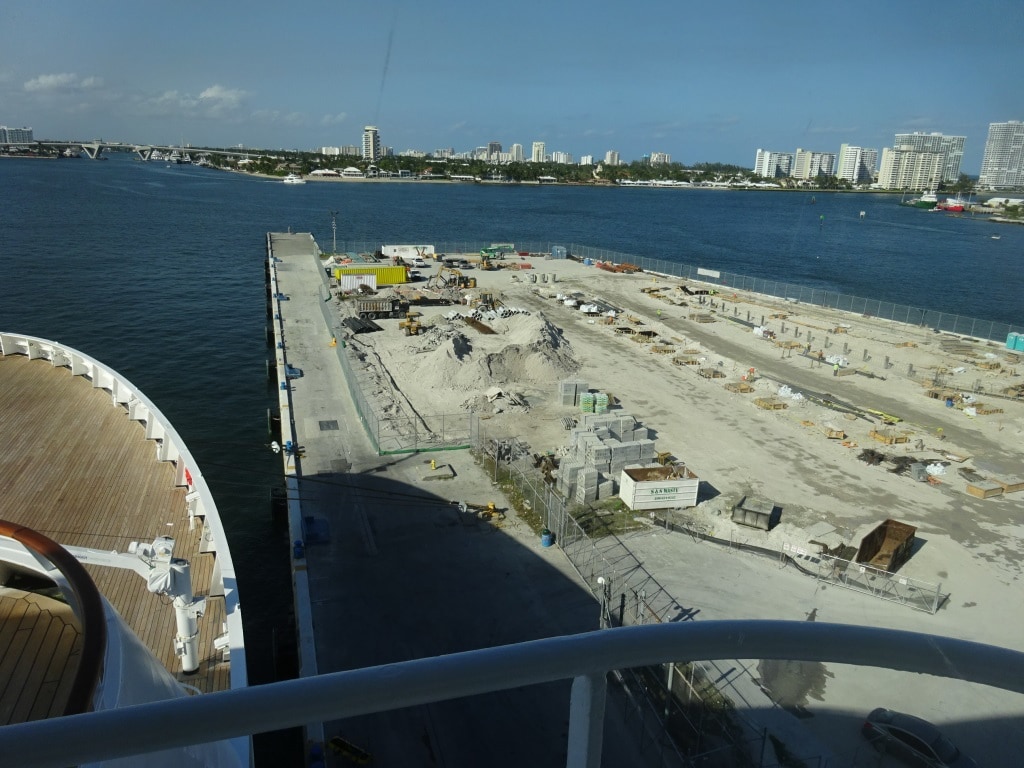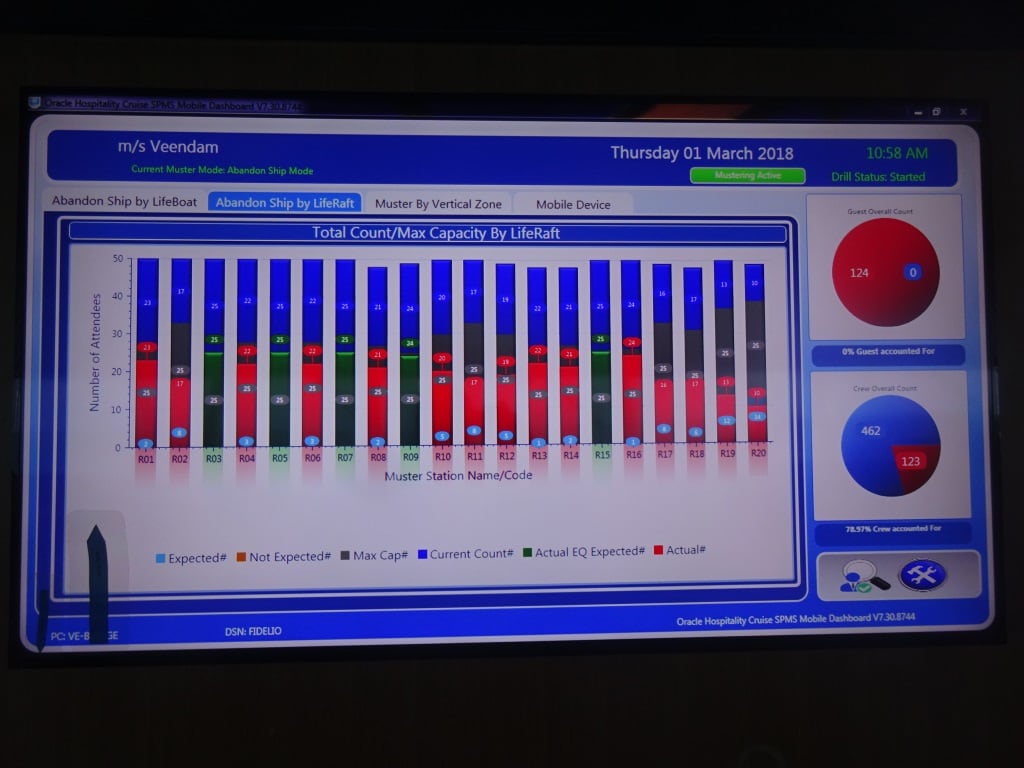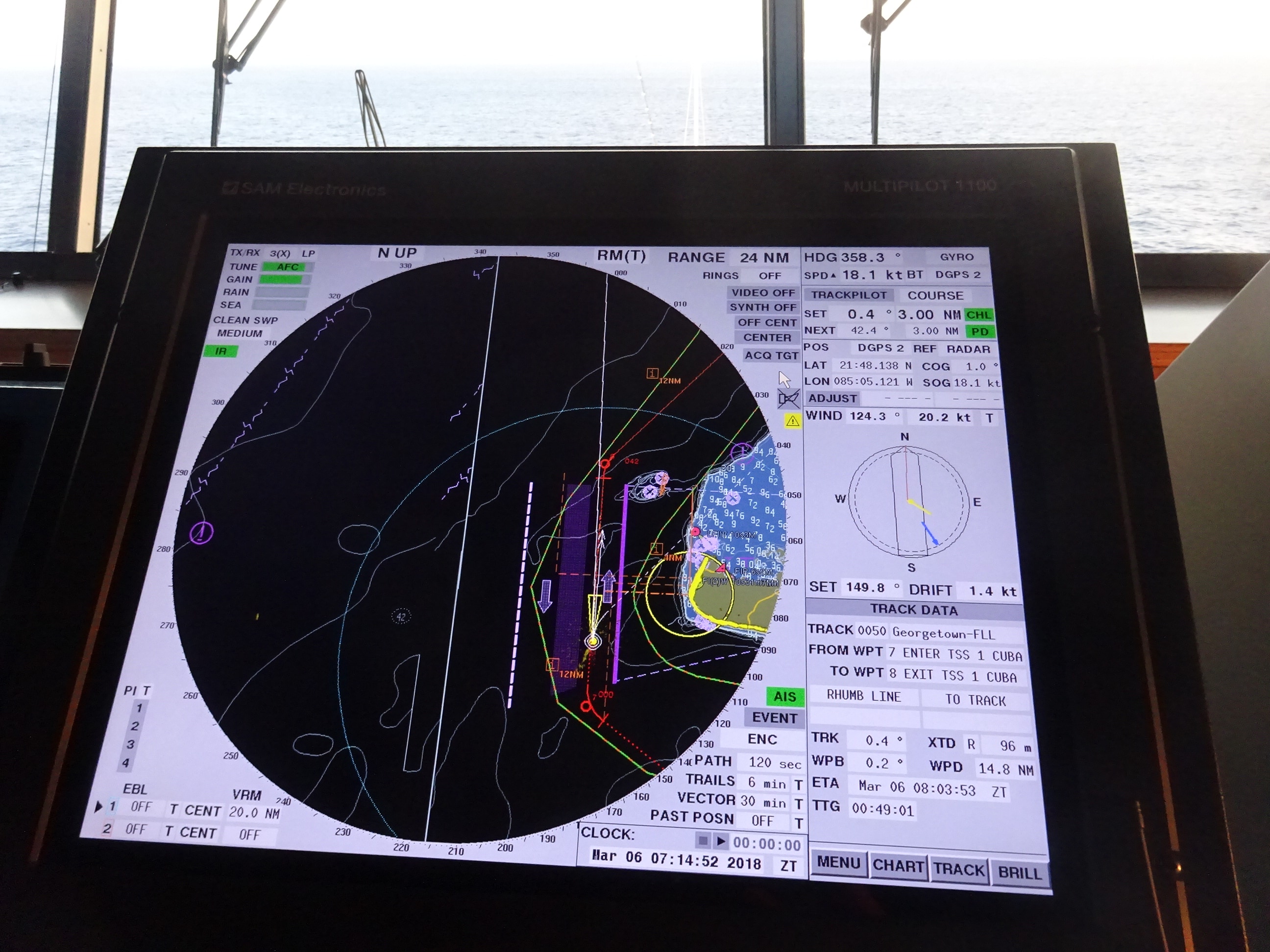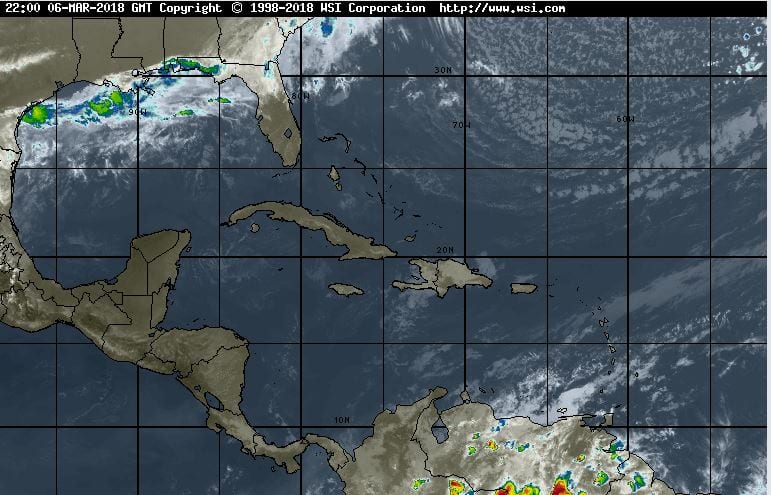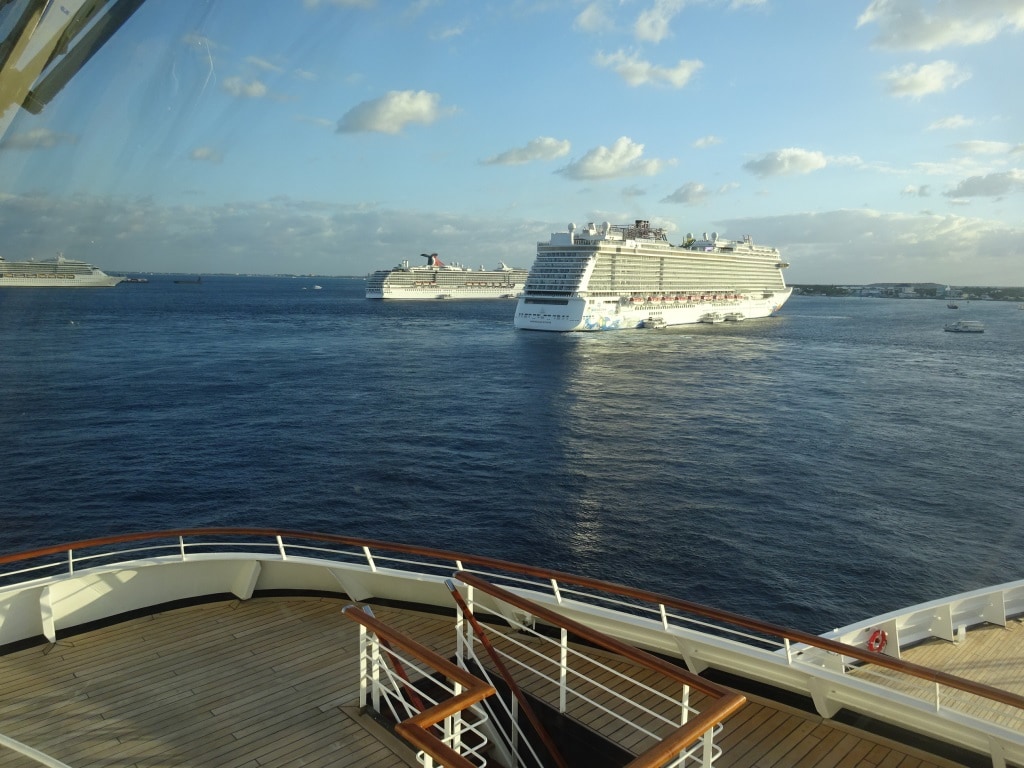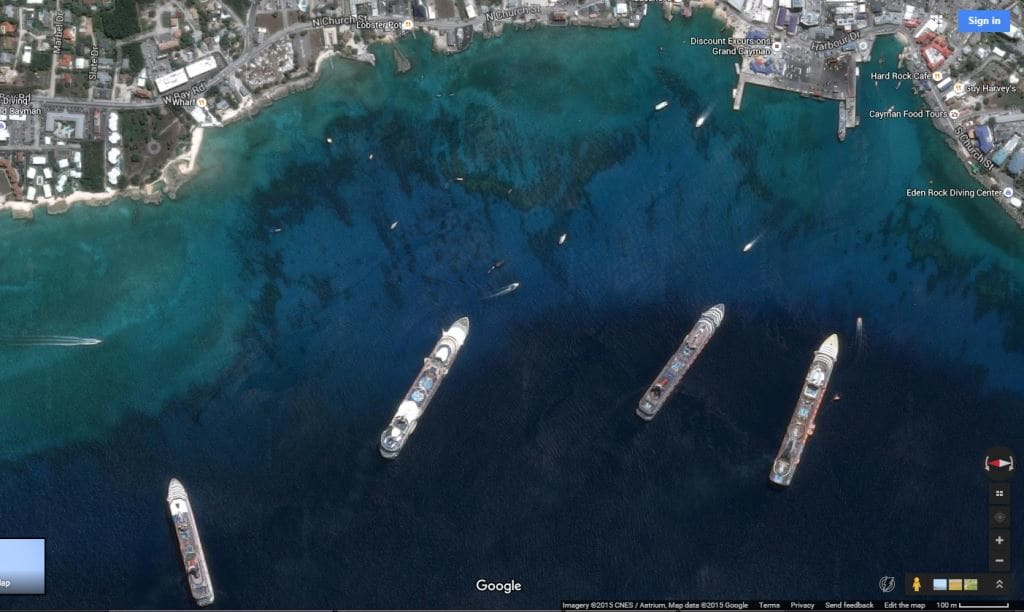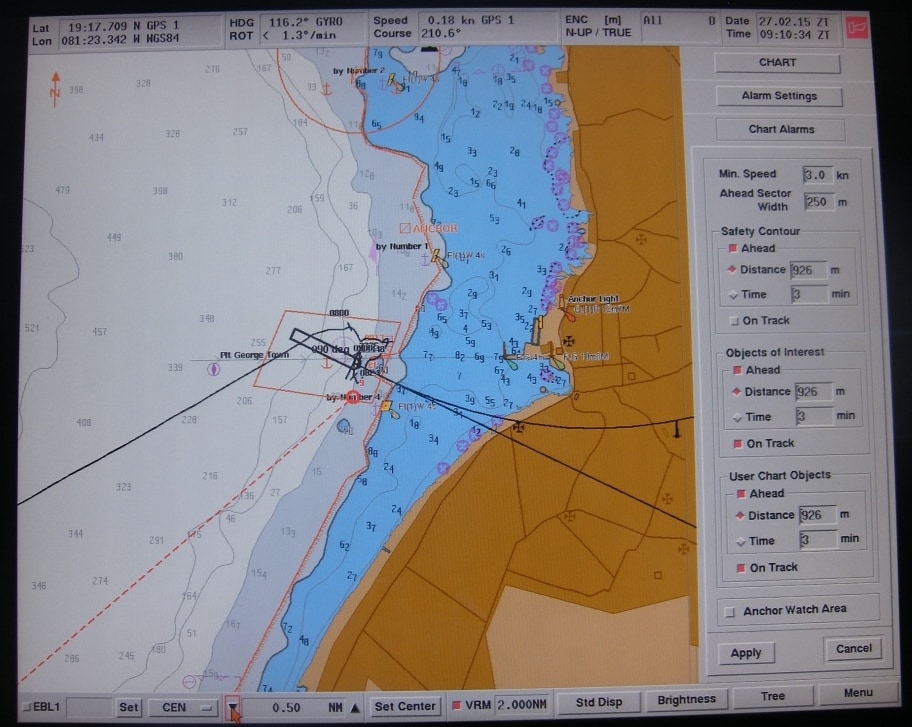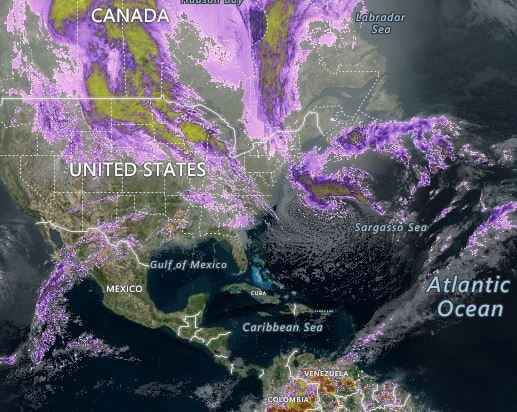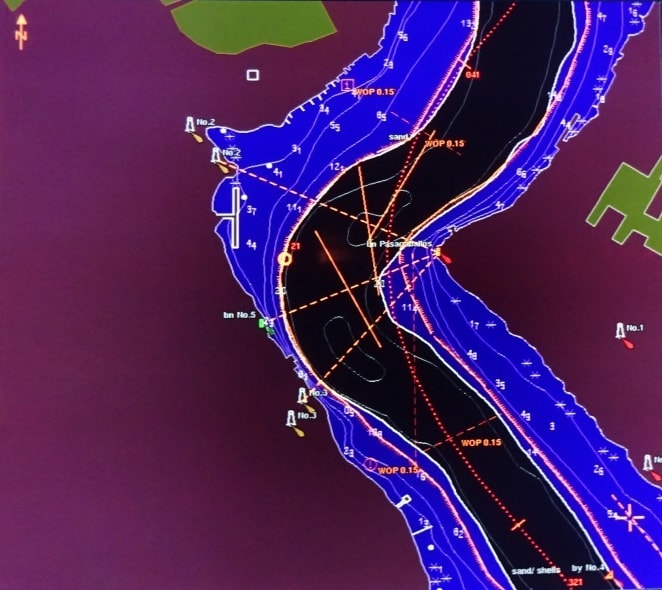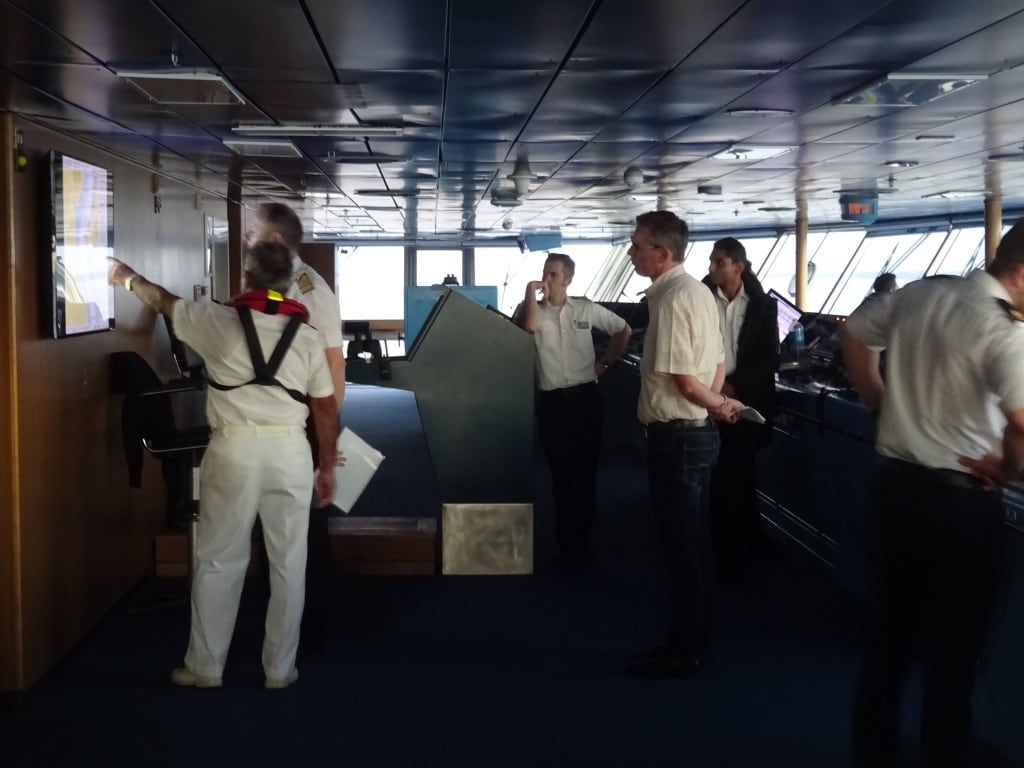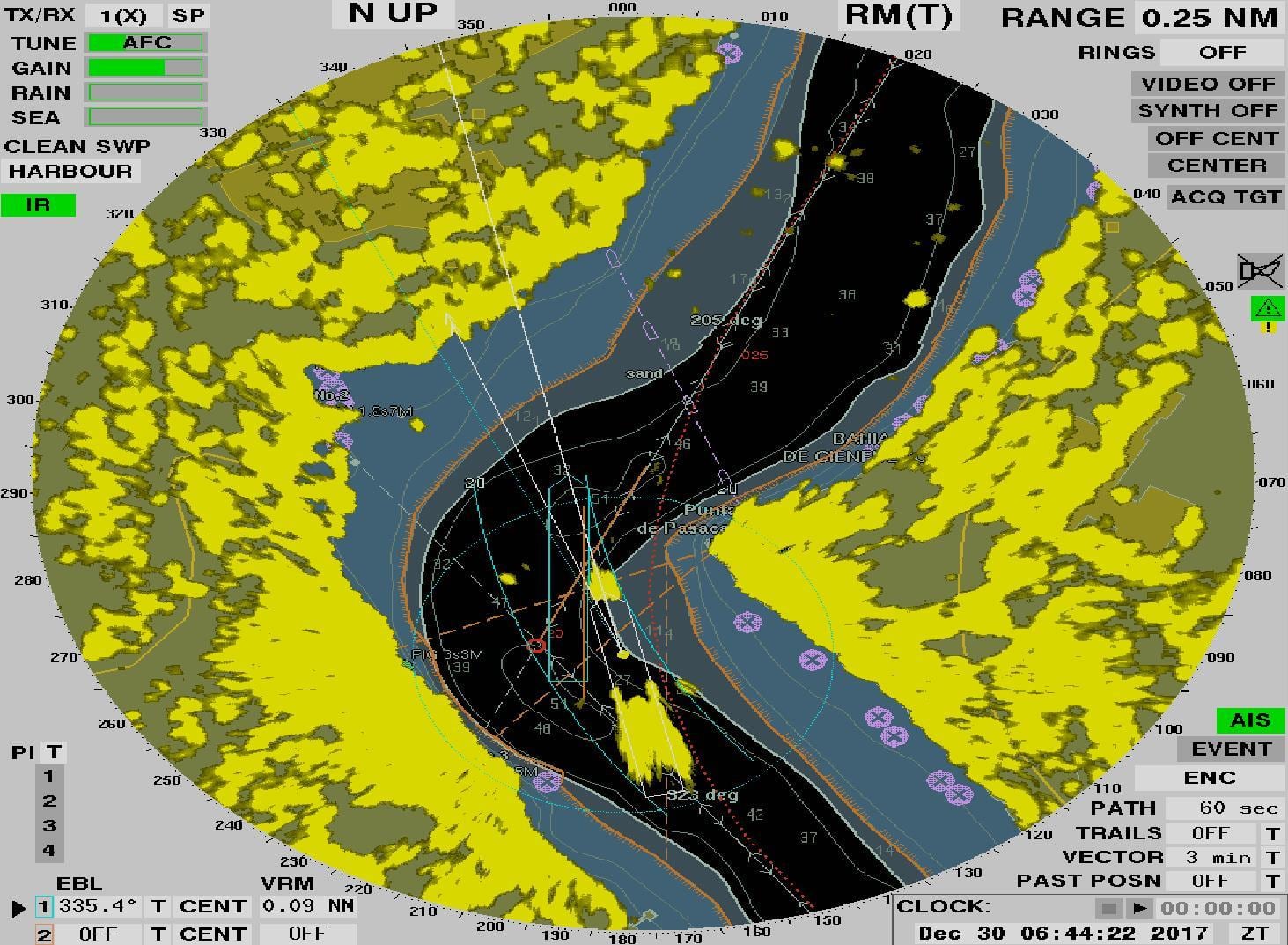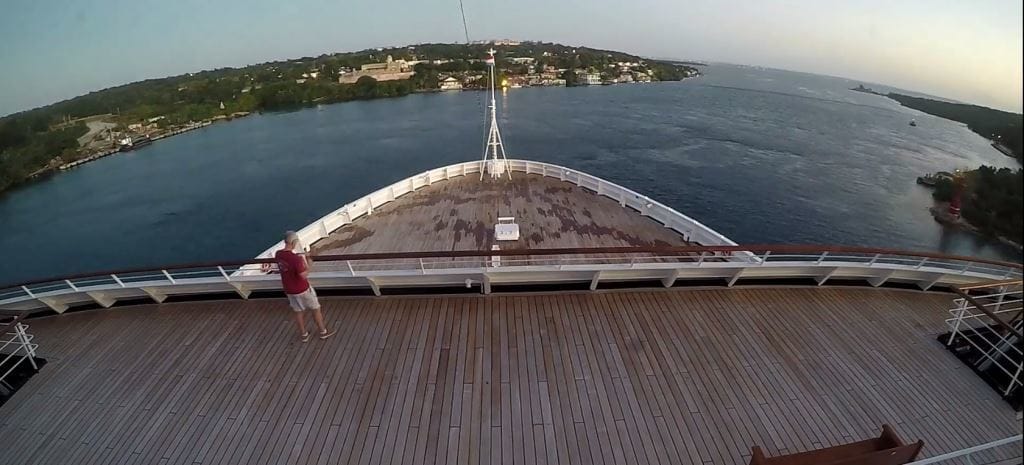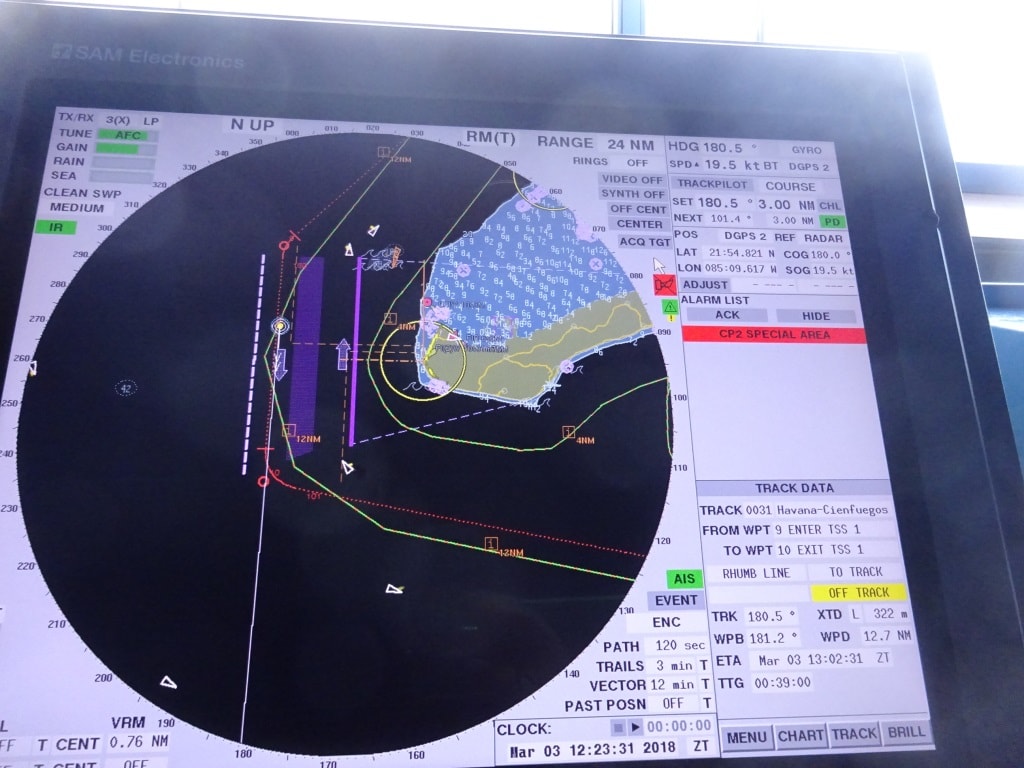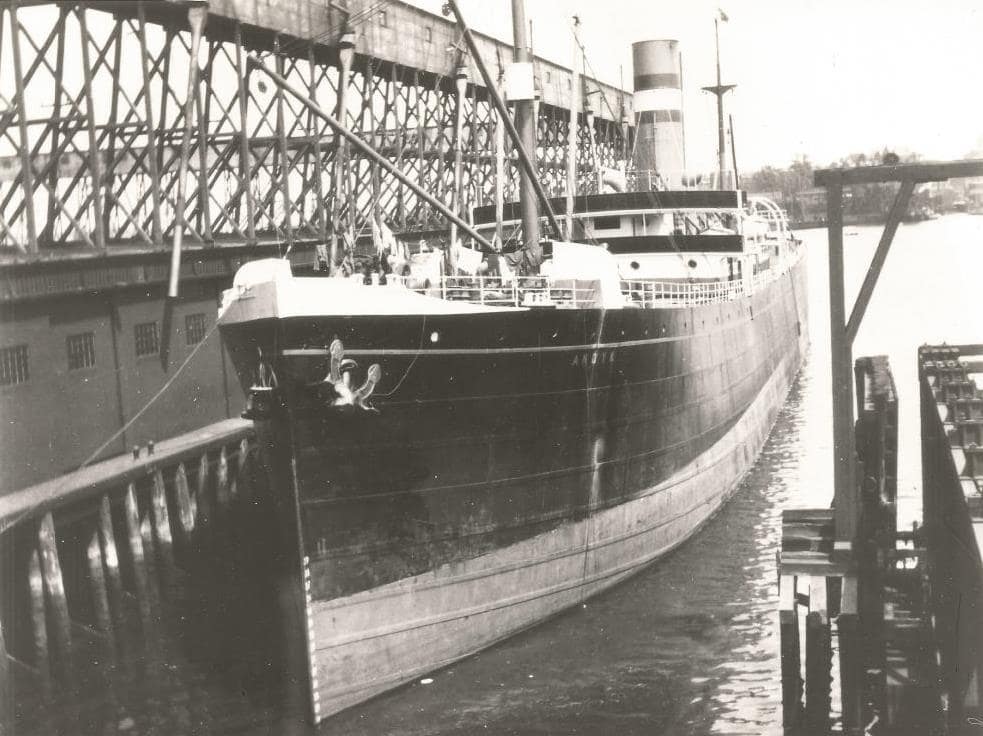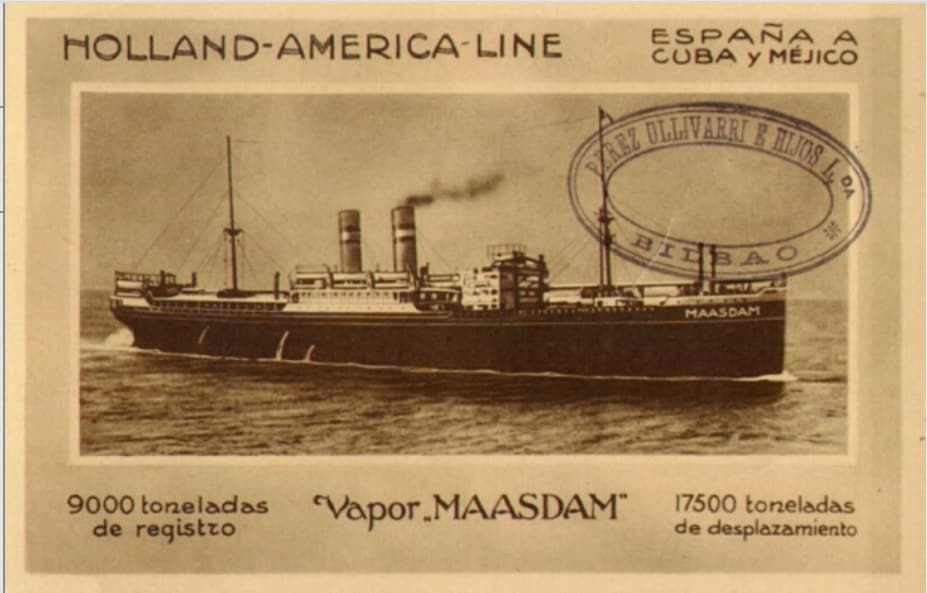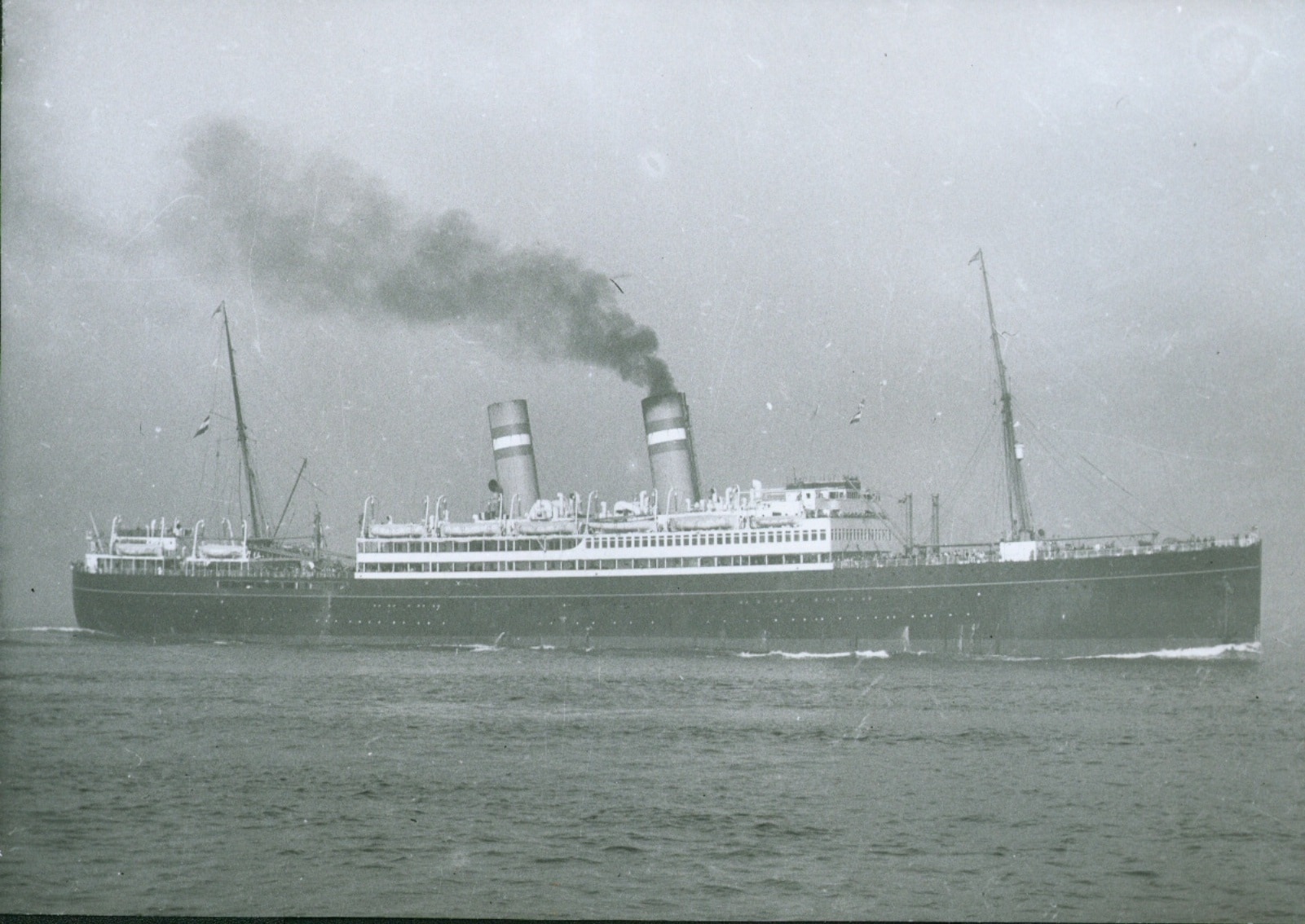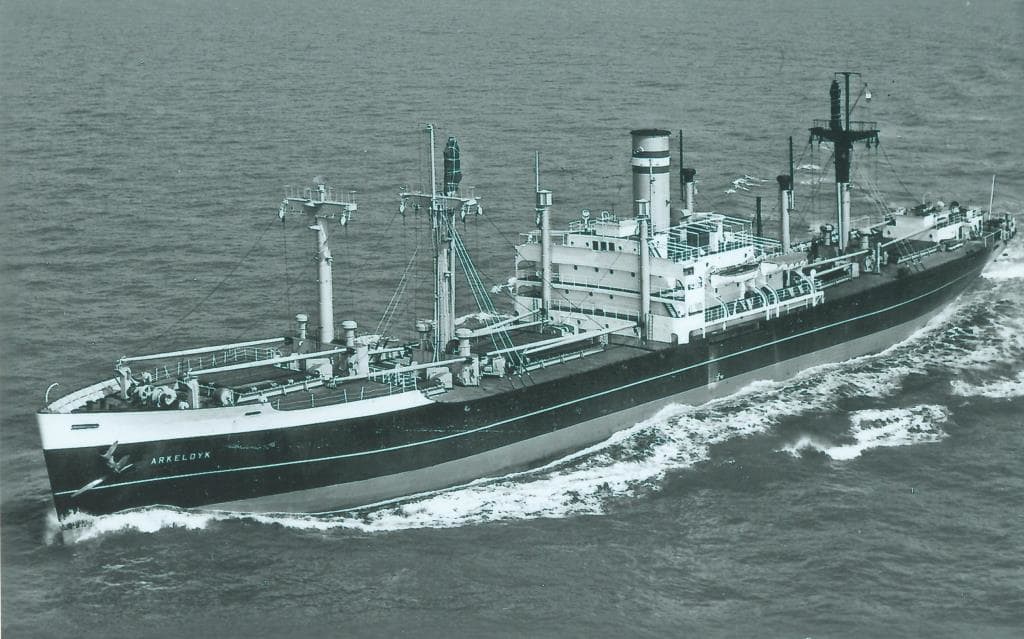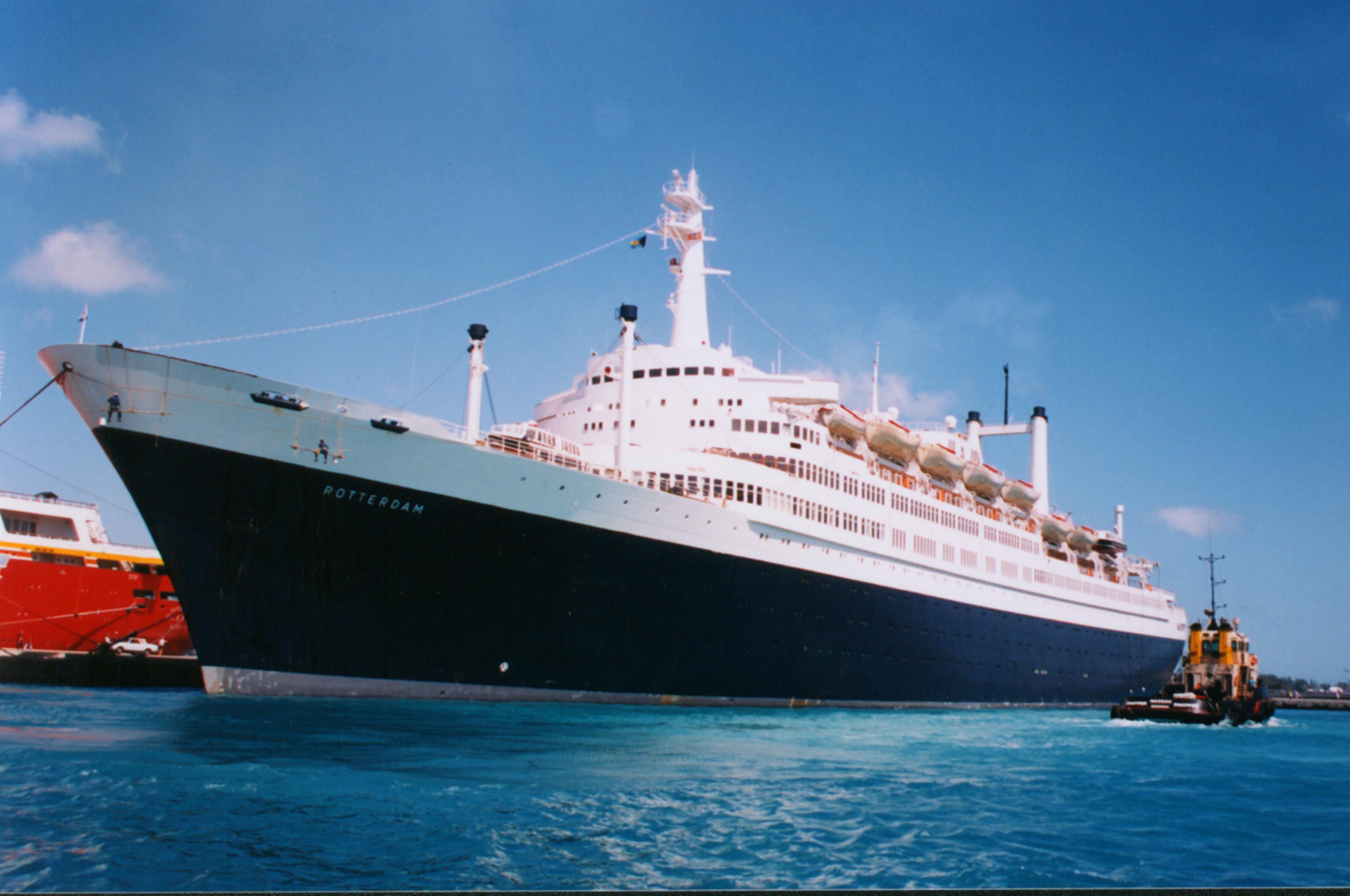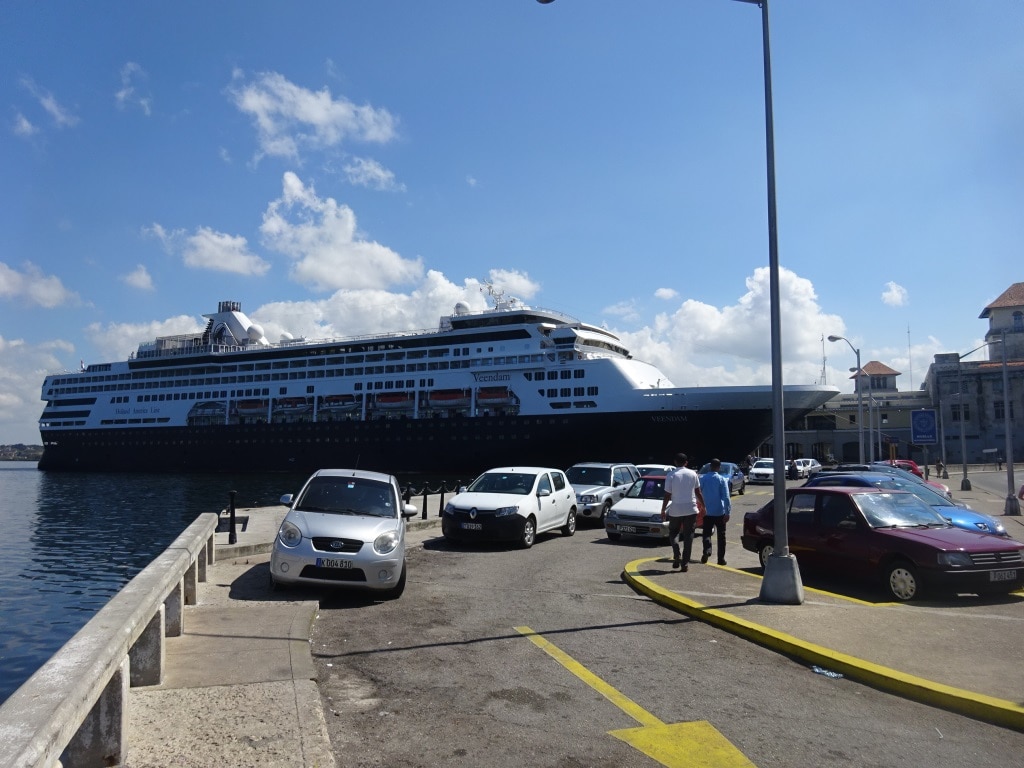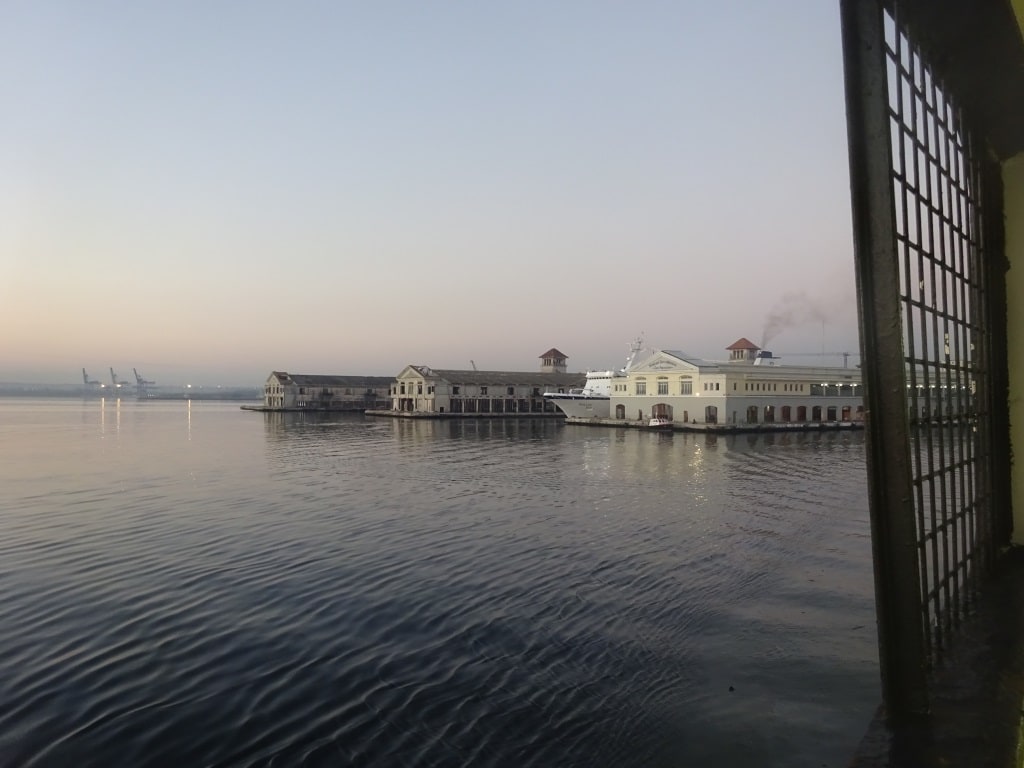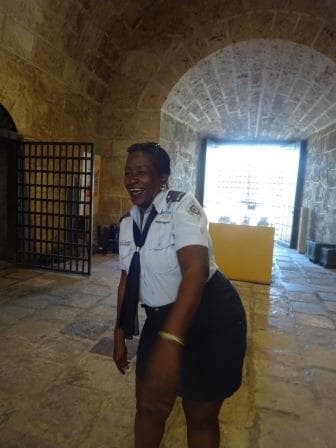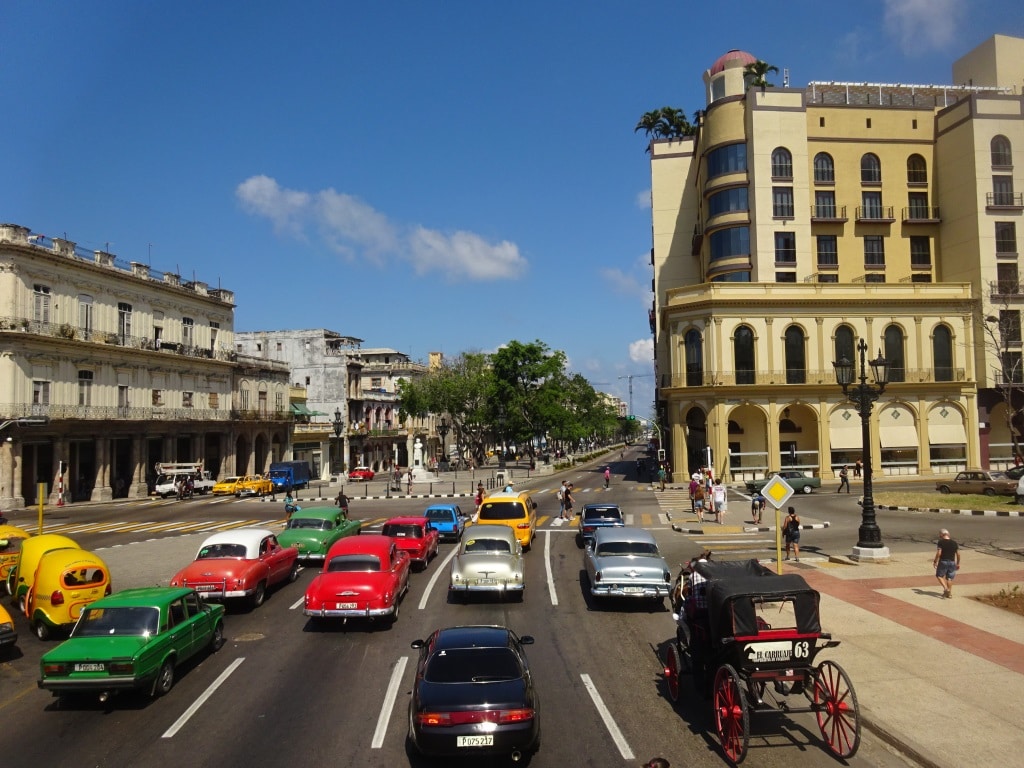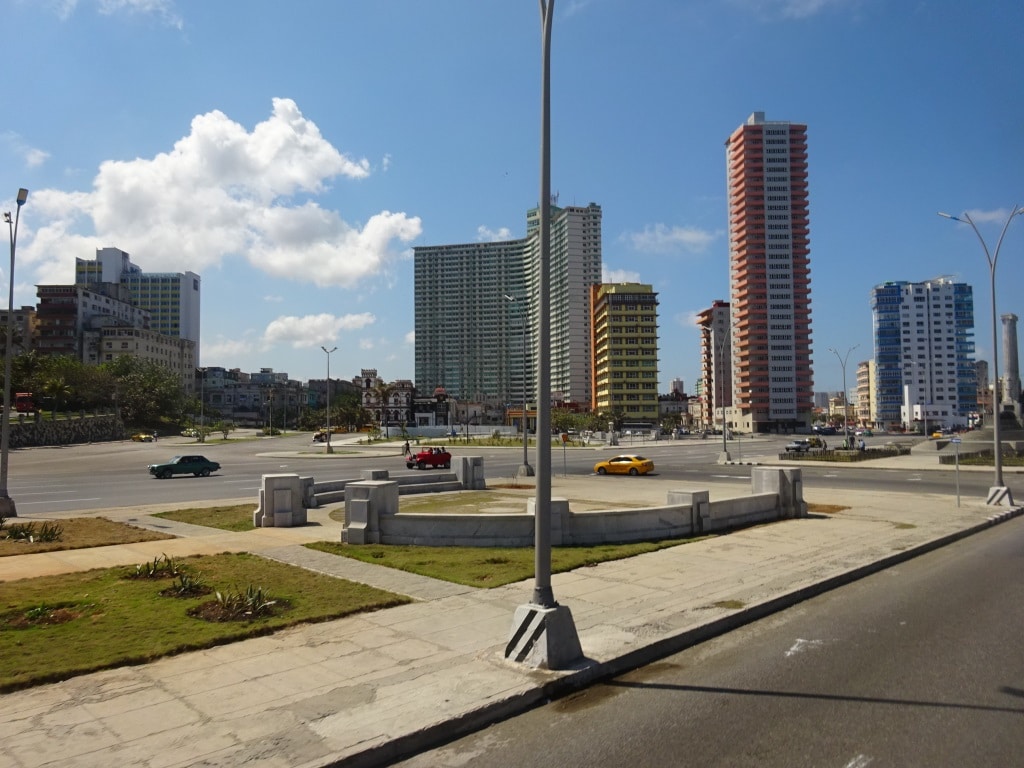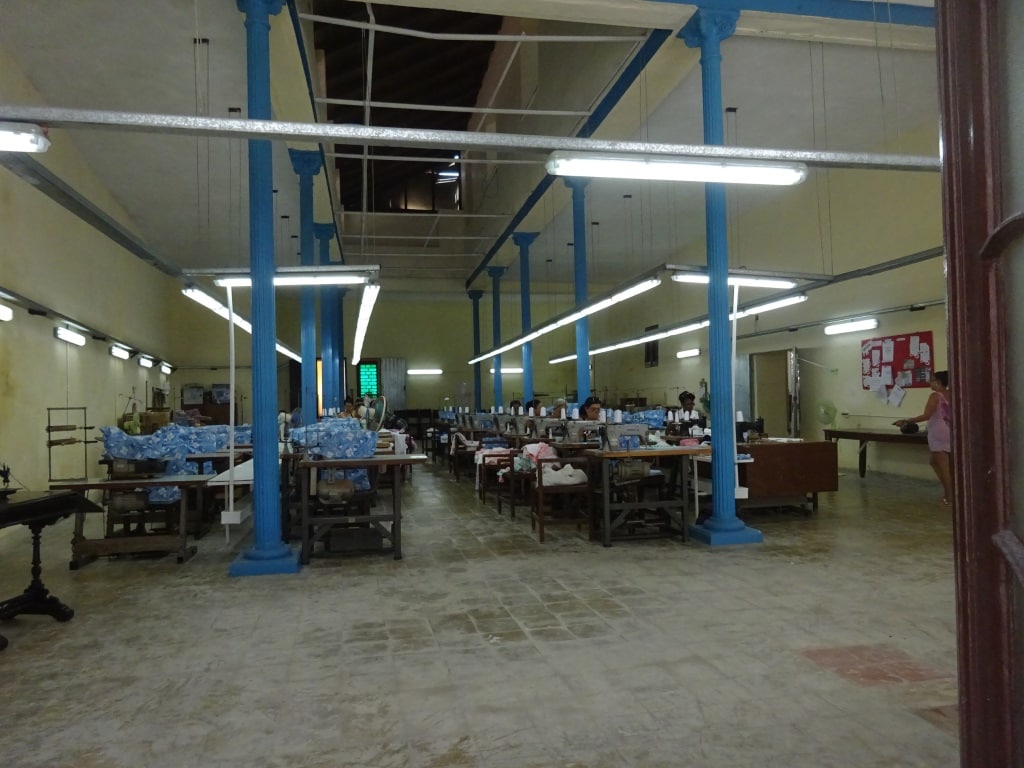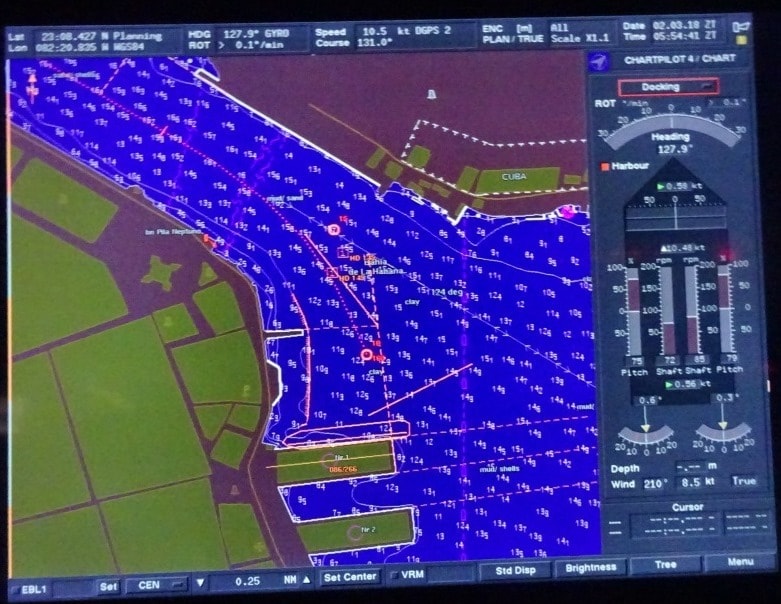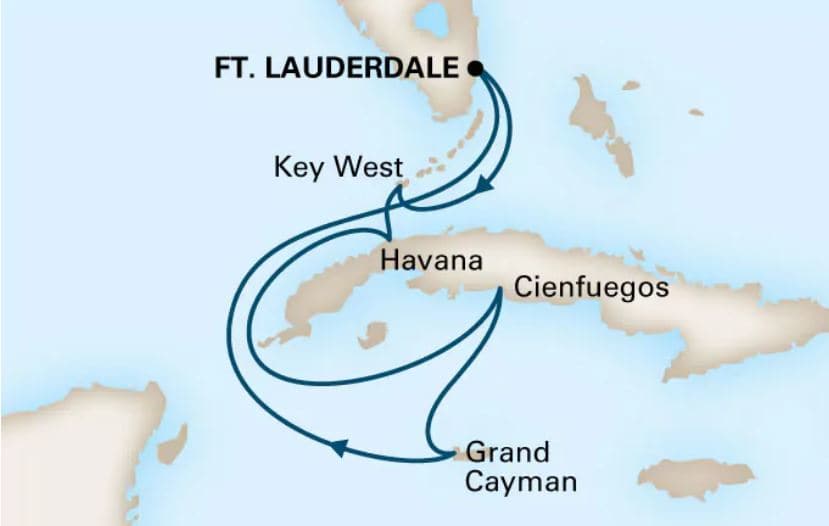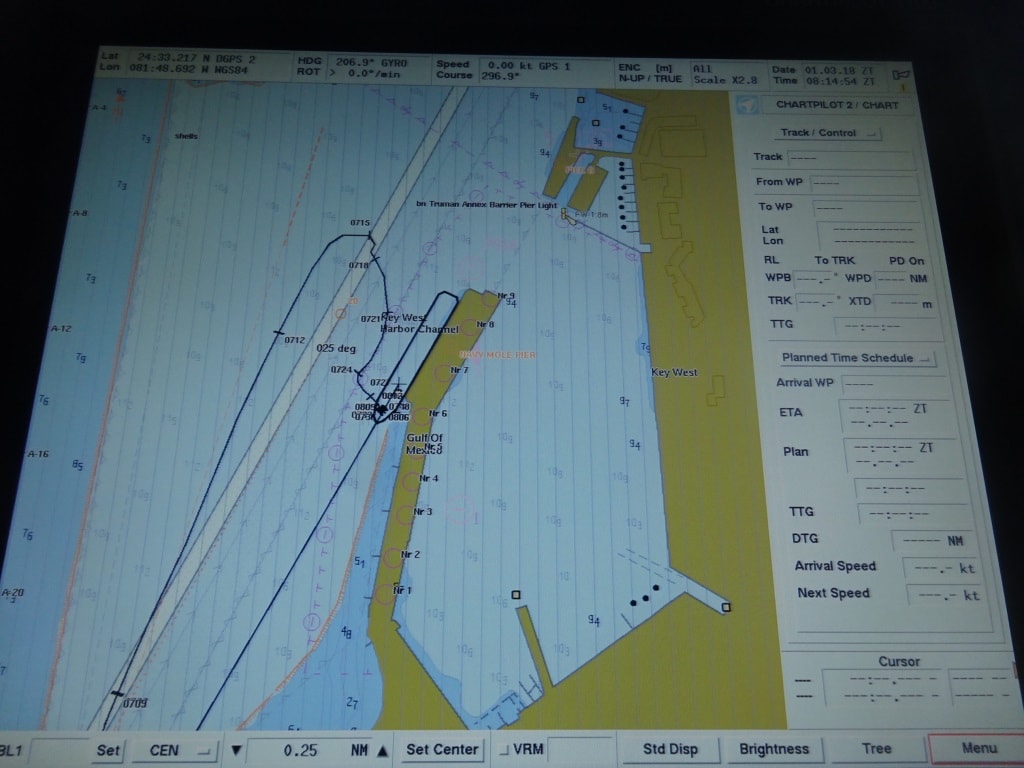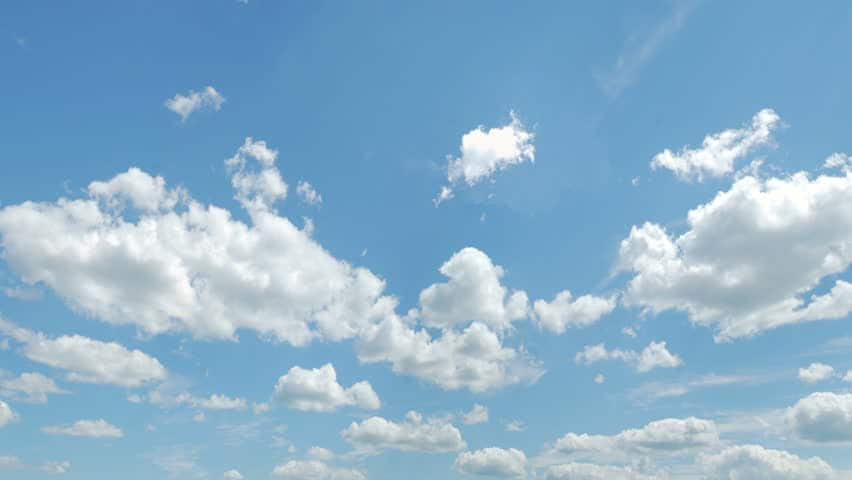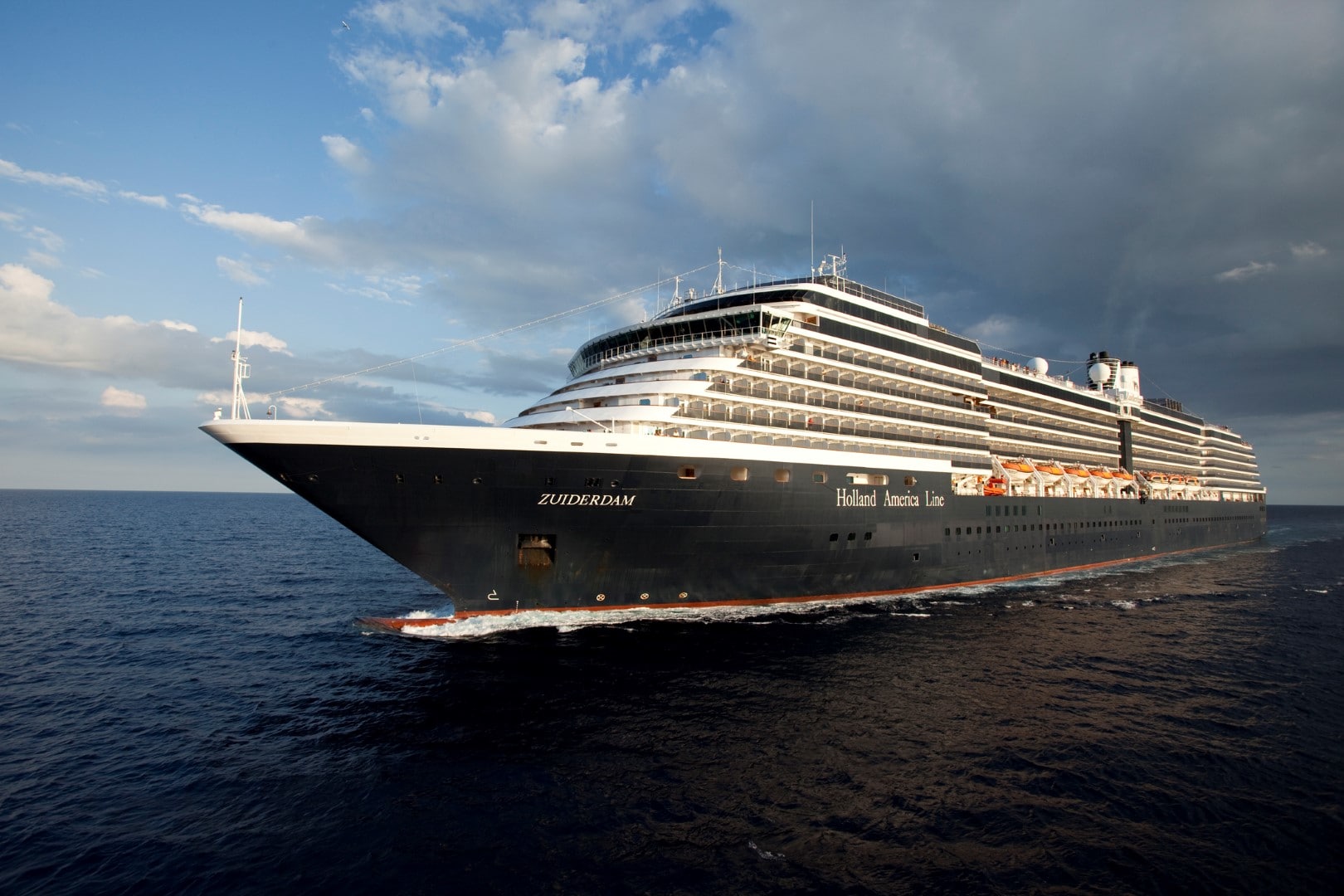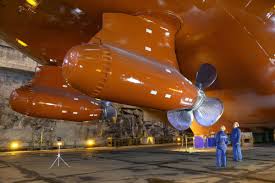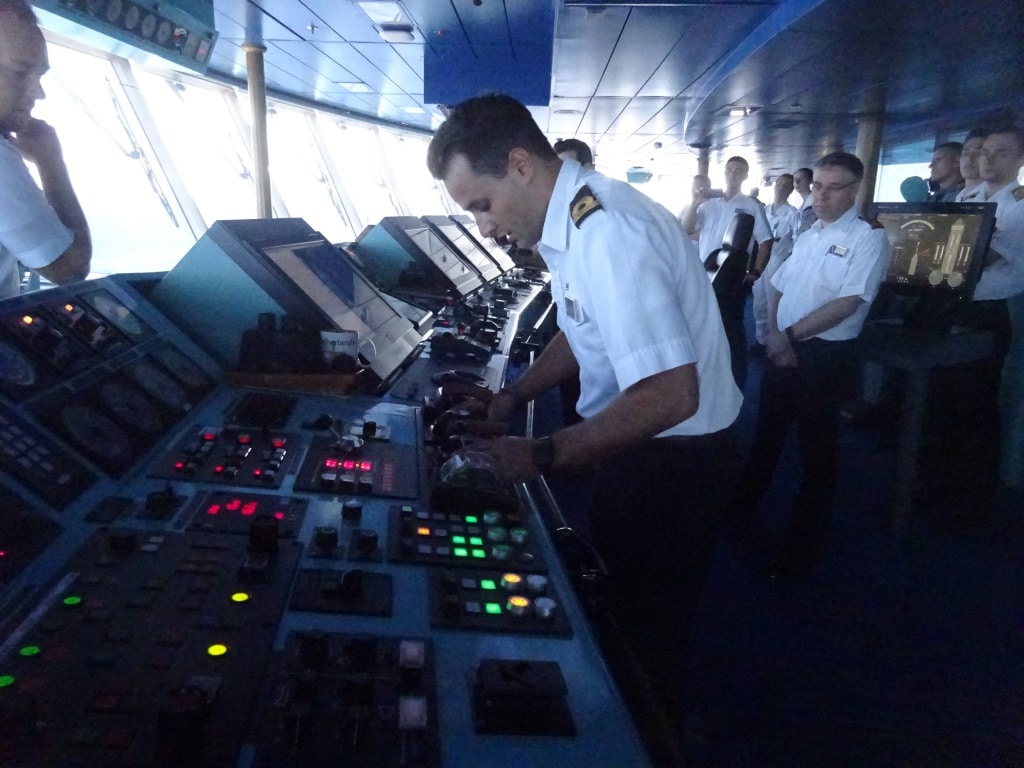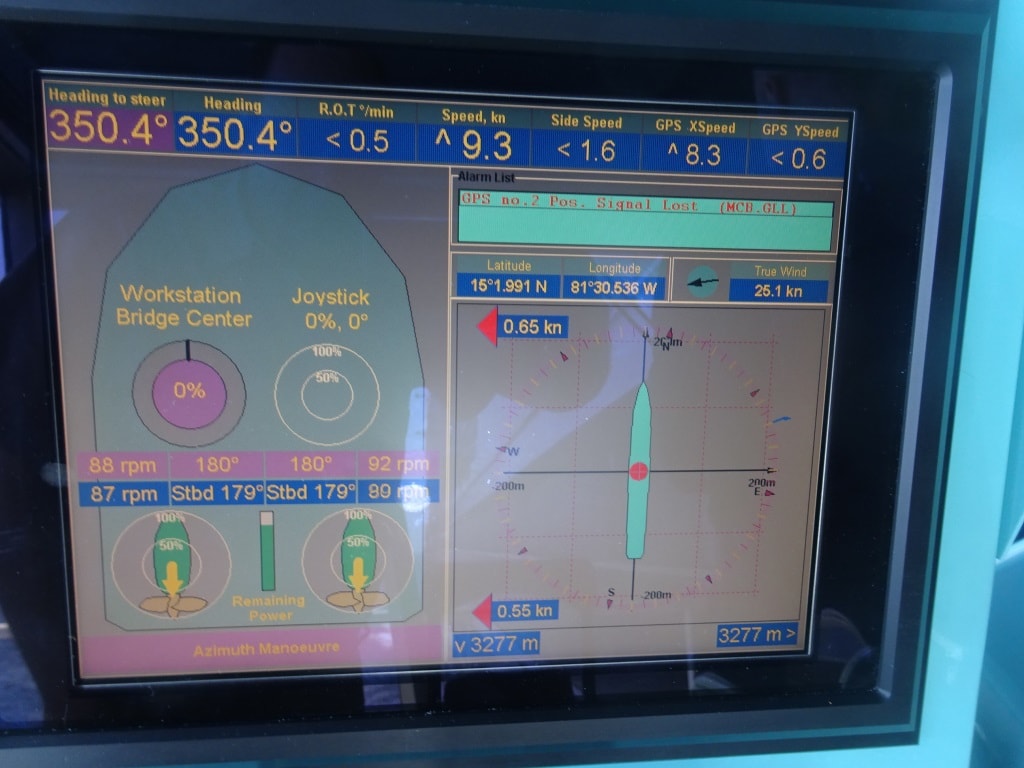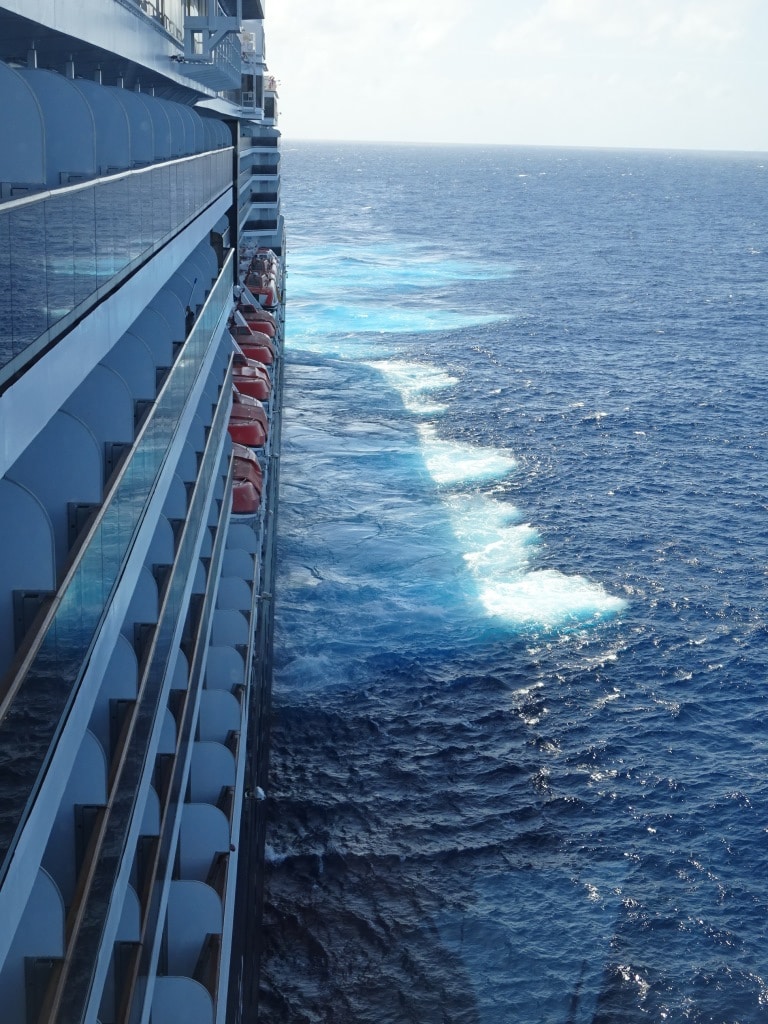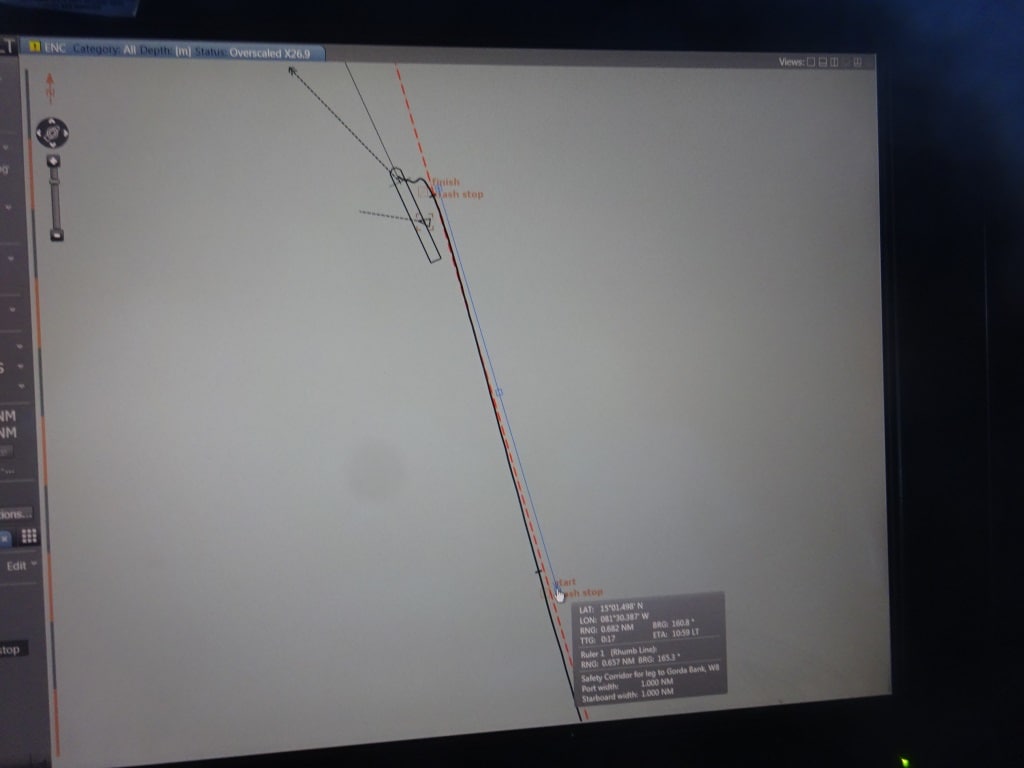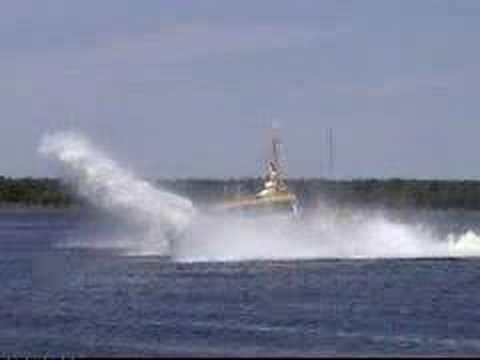We are now on our way to our first port of call Charlotte Amalie, St. Thomas US Virgin islands. To get there takes 36 hrs. at full speed so we have scheduled two days at sea, otherwise you would arrive around 8 pm in the evening. Most of our guests prefer to be in dinner at that time. To get around this schedule, many cruises call at San Juan first and then go St. Thomas. If you do that, then you can be docked in San Juan by 14.00 hrs. and stay there to midnight and go to St. Thomas the next day. San Juan is a very nice city to spend an evening in. Why do we not do that? because San Juan has still not recovered from the devastation of the last Hurricane. Work has been done in and around the San Juan but parts of the island are still without electricity and even in San Juan there are still areas where traffic lights and other basic utilities are out of order. That complicates the tours and that makes night life not yet what it was before and what it is supposed to be. And we do not want to disappoint our guests. On our old schedule we were supposed to be there on March 12 but we will be in Antigua instead.
There are two ways to get to the upper Eastern part of the Caribbean from Ft. Lauderdale. Sailing above the Bahamian Islands, its sand banks and reefs or going under it. Going north is about 40 miles shorter, going south, through the Old Bahama Channel, is more sheltered. It is up to the captain to decide which route the ship will take. The word shelter is only important if there is a storm raging out there in the North Atlantic and you do not want to expose the guests to a roller coaster experience for two days.
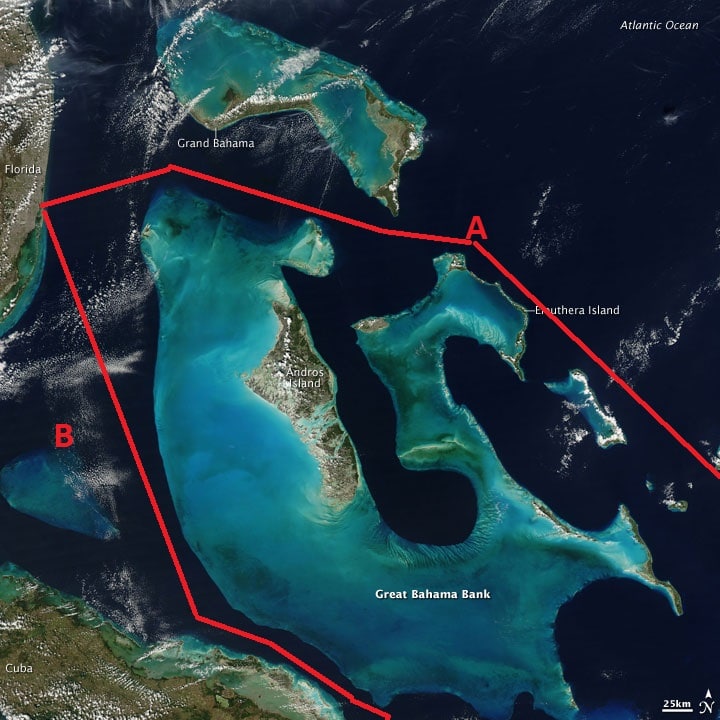
Route A takes you North of the Banks, Route B, South of the Banks. Wouldn’t be handy to have a channel straight through Andros Island ?? (Thank you to whoever posted this beautiful photo on the internet)
When going north you leave the shelter of the Bahamian Islands around midnight after departure, and then you are exposed to the vagaries of what the North Atlantic can throw at you. Going south keeps you sheltered until late the first day at sea when you finally leave the last island (Great Inagua Island) behind. This time the decision was not so difficult for the captain. Although it is horrible up north, near the Eastern USA Seaboard, it translates for us only in wind from the wrong direction and some scattered rain clouds. The swell that is running hardly affects the Veendam and thus the captain is taking the shorter route.
Even these rain clouds were of little concern; by the time the guests arrived on deck most were out of the way and we had glorious sunshine. Tonight the wind will turn to the East again and then we have the regular Caribbean weather back. Pending unforeseen circumstances, it looks that we will have a regular Caribbean cruise for the coming 10 days.
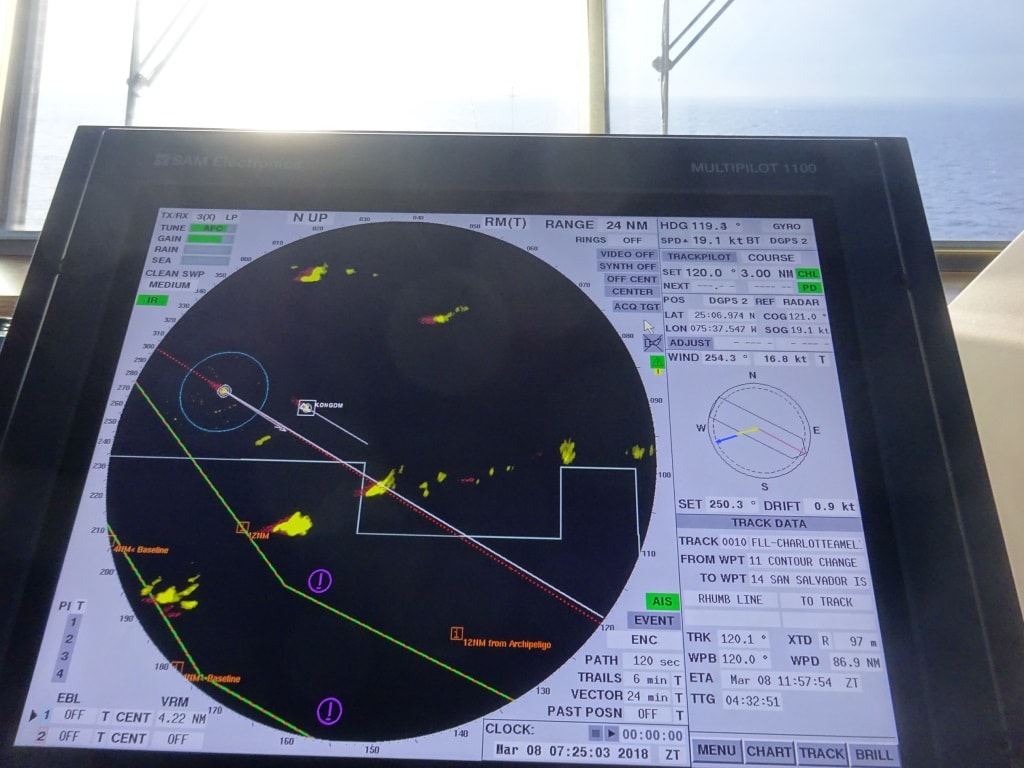
Scattered clouds are seen on the radar in yellow. The Veendam is in the blue ring, the white square is the Koningsdam sailing ahead of us and the green lines are indicating the 12 and 3 mile boundaries from the shore lines.
Picking up where I left off yesterday, the organization behind the scenes for our emergency drills. Our biggest challenge is to get everybody to the cabin in an emergency or to the lifeboat station, depending on what sort of emergency we are dealing with. The emphasis is on the word EVERBODY. 90% to 95% of the guests will march to the captain’s tune after one or more announcements. Our challenge is with those who might panic, those who do not believe that it is for real, or those who just plainly refuse to go. For that we have Sweep Teams. Sweep teams are groups of crew members who go through all the public areas, all the crew areas and all the cabins to get reluctant guests out and on the way. As humans can react differently under stressful circumstances we teach those crewmembers a few tricks to handle un-cooperative guests. I like to help out here as I found out that it is easier for a captain to convince a crewmember that he /she is allowed to yell and raise his/her voice against a guest. We are not used to that as we are in the service industry and always try to make the guest as happy as possible.
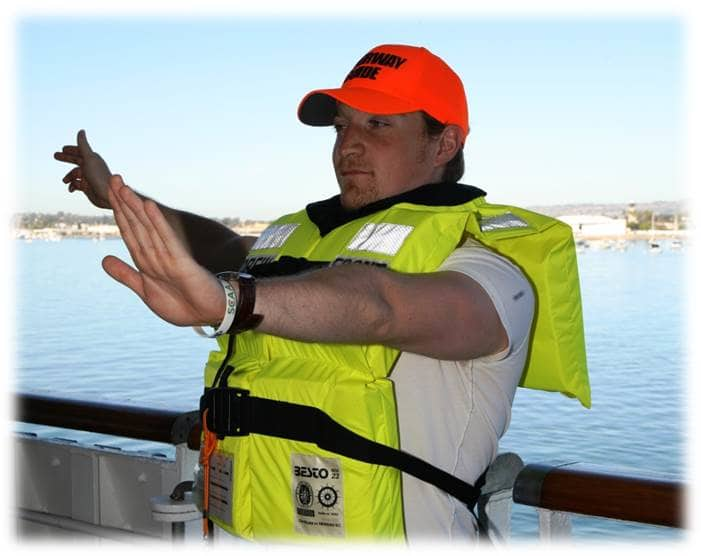
Hand signals are an important part of communicating as we do not always speak the language of the guests.
I once saw a little Philipinna hairdresser, all 5.2 feet tall and 80 pounds of weight, take my lessons to heart and having a go, with all guns blazing, against a 300 pound 6 foot 8’ USCG inspector who was testing her knowledge. He was really impressed and remarked that for a moment he felt as if he was confronting his wife in a bad mood. The ship passed the inspection with flying colors, just on her actions alone.
Tomorrow we have our 2nd day at sea, with more sunshine and good weather while we sail closer and closer towards our first port of call Charlotte Amalie. Tonight the clocks will go an hour forward as we move into the local time zone but everybody can sleep in if they want to as it is a sea day.
